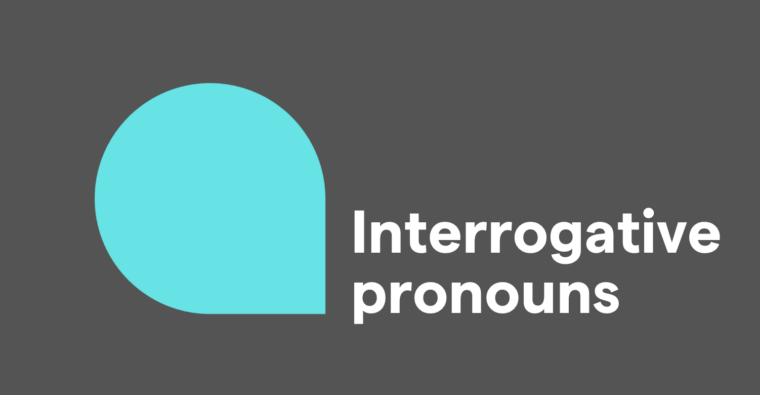
- The past perfect tense describes actions completed before another past event. It is often used with adverbs or adverb phrases like by the time and before, which clarify a sequence.
- Form the past perfect tense by using had + the past participle of the main verb.
- Regular verbs form the past participle by adding the ending -ed. Irregular verb past participles vary and can be memorized or looked up in a dictionary.
- Make the past perfect negative by adding not between had and the past participle (e.g., had not seen).
- Form a question in the past perfect tense by beginning the sentence with had and placing the subject between it and the past participle (e.g., “Had you seen it?”).
Here, we’ll cover what you need to know about how the past perfect operates and how to use it correctly, with rules and examples.
Table of contents
What is the past perfect tense?
How to use the past perfect tense
When not to use the past perfect tense
How to make the past perfect tense negative
How to ask a question in the past perfect tense
Common regular and irregular verbs in the past perfect tense
What is the past perfect tense?
The past perfect tense, also called the pluperfect, is a verb tense used to indicate that something happened earlier than another specified time in the past. It’s useful for showing a sequence when it’s especially important to understand what happened in what order. Here’s an example of how the past perfect establishes sequence:
The use of the past perfect (had left) in partnership with the simple past (arrived) lets us know that two events happened in this order: First, she left. Then, he arrived.
Simple past vs. past perfect
The past perfect and the simple past refer to different levels of the past, and they often work closely together to do that. When you’re using the simple past to discuss some point in the past, and then you need to reference an event that happened even earlier, using the two past tenses together allows you to convey the sequence of events clearly.
The simple past is for referring to one specific time in the past—to something that happened or was true at that time and is currently no longer happening or true. It’s called simple for a reason; it’s your go-to tool for straightforward discussions of the past:
The past perfect, on the other hand, is used only when you are dealing with multiple levels of the past, because it refers to a level of the past that is earlier than a more recent level that is either explicitly identified or implied. One way that it can do this is alongside the simple past tense, as in the following example:
In this sentence, got and noticed are in the simple past, and had changed is in the past perfect. What this tells us is that (at some point in the past) the subject, she, got home and noticed that (at some earlier point in the past) something had changed.
Notice that we don’t need to know exactly when these two points in time were; what is important is the sequence of events, which is made clear by the use of the two past tenses.
Examples of the past perfect tense
Here are a few more examples of sentences using the past perfect tense to show sequence in a variety of ways:
How to use the past perfect tense
To become adept at using the past perfect tense, it’s important to understand how to conjugate verbs in it, when you need it, and how to correctly construct sentences that use it. In this section, we’ll cover all of that, with examples.
The past perfect formula
The formula for the past perfect tense is had + [past participle]. Had here is the simple past tense form of to have, and it functions as an auxiliary verb in the past perfect. It doesn’t matter if the subject is singular or plural or what person it is in; the formula doesn’t change.
When you need the past perfect
We’ve established that the past perfect is necessary when you need the sequence of past events to be unambiguous. Here are a pair of sentences that illustrate how it makes that sequence clear:
- Ambiguous: I was relieved that the children used washable paint.
- Unambiguous: I was relieved that the children had used washable paint.
In the first sentence above, both the main clause of the sentence (I was relieved) and the restrictive clause that the children used washable paint are in the simple past. Since we don’t know when in the past the restrictive clause is set (in effect, when it happened) in comparison to when the speaker was relieved, we can’t be sure what the sentence as a whole means—perhaps it means the speaker was relieved that the children habitually used washable paint, for example.
The unambiguous sentence’s use of the past perfect in the restrictive clause makes it clear: First, a specific instance of the children using washable paint occurred; at some later point, the speaker discovered that fact and was relieved about it.
Adverbs and adverbial phrases such as by the time, before, and until often signal a need for the past perfect tense. In the following example, Before yesterday establishes that yesterday is the more recent past before which the action of the main clause took place:
Another time to use the past perfect is when you are expressing a condition and a result:
The past perfect is used in the part of the sentence that explains the condition (the if-clause). It is used alongside the past perfect conditional (would have caught).
When not to use the past perfect tense
Don’t use the past perfect tense if there’s no sequence of past events you need to convey:
If you said the above sentence on its own to someone, your listener would be waiting for you to describe what happened next, because using the past perfect implies that your action of cleaning the floor occurred before something else happened. The “something else” doesn’t always have to be explicitly mentioned, but context needs to make it clear. In this case there’s no context, so the past perfect doesn’t make sense.
In the above version, the perfect past does make sense, as it goes on to describe what happened next, in the simple past.
Don’t use the past perfect tense repetitively, after the level of the past that you’re writing about has already been established by using the past perfect. In narrative writing, the past perfect tense is frequently necessary to show that the action it describes happened before other past actions—whether in the same sentence or preceding ones—that are described in the simple past tense.
However, writing an entire paragraph with every verb in the past perfect tense is unnecessary and distracting, because once you have established the earlier time, you can continue to describe that earlier time in the simple past, and readers will understand when the action is happening.
In the first sentence, the writer uses the simple past to narrate what happened this morning (I remembered), and then establishes that there was a further-back level of past time in which what they remembered occurred, indicated by the past perfect of had noticed and had thought. Then, in the second sentence, they can switch back to the simple past and be understood as still referring to that earlier time (last week).
How to make the past perfect tense negative
The formula for making the past perfect tense negative is identical to the regular past perfect formula except for the addition of not: had + not + [past participle]:
Particularly in informal contexts, had and not can be combined into the contraction hadn’t:
How to ask a question in the past perfect tense
The formula for asking a question in the past perfect tense is had + [subject] + [past participle].
This inverted interrogative structure for the past perfect tense applies to open-ended questions as well as yes-no questions:
Common regular and irregular verbs in the past perfect tense
Regular verbs follow expected patterns in their conjugations. Irregular verbs do not follow any rule or pattern in the ways they change form; they need to be memorized or looked up in a dictionary.
In the past perfect tense, the main verb appears in its past participle conjugation, which is formed irregularly in the case of an irregular verb. However, the simple past form of the auxiliary verb to have—which is had—does not change, regardless of what the main verb is and whether that main verb is regular or irregular.
In this section, we list some common regular verbs and some common irregular ones with their past perfect conjugations.
Common regular verbs in the past perfect tense
| Infinitive | Past Perfect | Negative |
| to ask | had asked | had not asked |
| to work | had worked | had not worked |
| to call | had called | had not called |
| to use | had used | had not used |
Common irregular verbs in the past perfect tense
| Infinitive | Past Perfect | Negative |
| to be | had been | had not been |
| to have | had had | had not been |
| to do | had done | had not done |
| to say | had said | had not said |
| to get | had gotten* | had not gotten* |
| to make | had made | had not made |
| to go | had gone | had not gone |
| to take | had taken | had not taken |
| to see | had seen | had not seen |
| to come | had come | had not come |
*The past participle of to get is gotten in American English. In British English, the past participle is got.
The past perfect tense allows you to make the sequence of past events and situations clear, which is essential whether you’re writing historical fiction or taking meeting notes. A solid grasp of the nuances of how the past perfect works with the simple past, how to construct different kinds of sentences with it, and how to avoid it when it would be incorrect is an important tool to have in your writer’s kit.
Past perfect tense FAQs
How do you know when to use the past perfect tense?
Use the past perfect tense when writing about two or more past actions that happened at different times, especially to clarify sequence or otherwise avoid ambiguity about different parts of the past and what went on during them.
What’s the difference between the simple past and the past perfect?
The simple past describes completed actions in the past, while the past perfect indicates a past action that was completed before another, more recent, past.
How do you form sentences in the past perfect tense?
The past perfect is formed by placing the auxiliary verb had before the past participle of the main verb. This is true with any subject, regardless of person or number. In declarative sentences, the subject comes before had and the past participle (She had been there before). In questions, the subject comes between had and the past participle (Had she been there before?).
Are there verbs that don’t follow regular past perfect rules?
The past perfect uses the past participles of verbs, and irregular verbs have unique past participles that need to be memorized or looked up. For example, the past perfect of to go is had gone, not had goed.






